|
Ford Overview
Ford Victory Pictorial
Ford WWII Production Database
Ford M4A3 Sherman Tank Photos
Ford Highland Park Tank Plant
Highland Park, MI
1910-Current
This page update 2-17-2023.
The Ford Highland Park Plant that introduced
the world to automobile mass production still exists. Not
all of it still stands, but enough of it exists to make a visitor realize how big it once was. It was massive
and was located on 60 acres of land!
Automotive production moved to the River Rouge
in the late 1920s. Then Highland Park produced automotive trim.
During World War Two the plant used its skill in automotive trim to make squad tents
for the US Army.
Highland Park allocated 789,624 square feet of floor space for the
production of the M4A3(75) Sherman tank and the M10A1 Wolverine tank
destroyer.
Highland Park World War Two Production
Statistics: 1,690 M4A3 Tanks, 1,038 M10A1 Tank Destroyers, 1,202
Gun Directors, 9,498 Squad Tents, 19,985 M34 and M34A1 Sherman Tank Gun
Mounts, and parts for P&W R-2800 aircraft engines built at Ford
River Rouge.
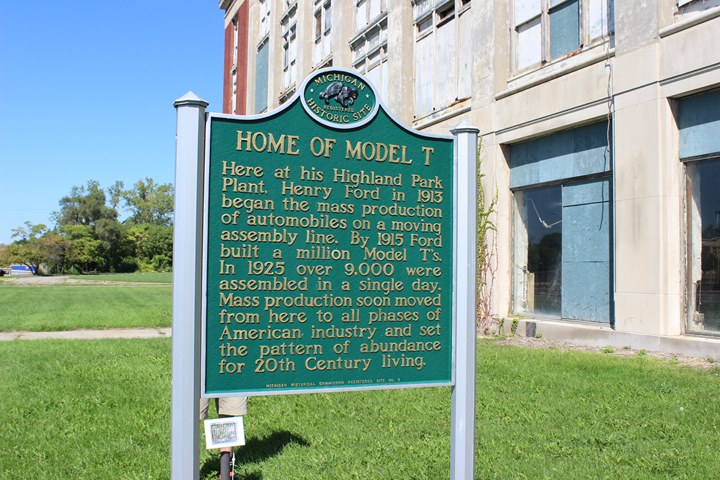
The Ford Motor Car Company began production
of the Model T in this plant in 1910. It was not until October 7,
1913, that the moving assembly line was introduced. This plant was
in the world to have one; and at the time was the largest manufacturing
facility in the world. Use of the moving assembly
line cut the price of a Model T in half.
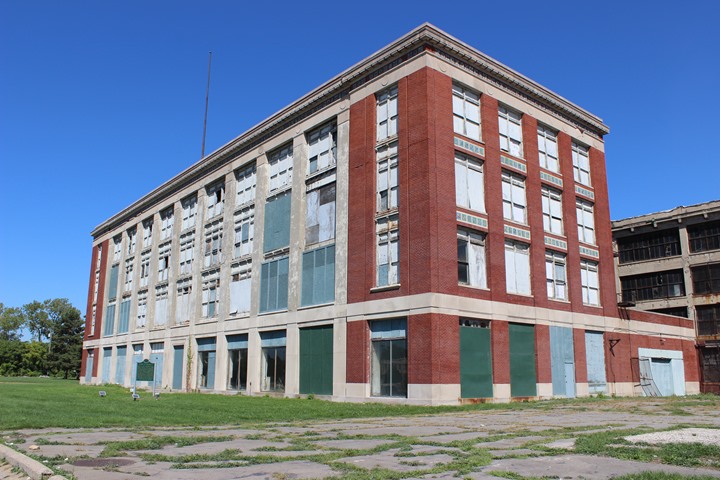
This is the former administration building.
This building faces west on Woodward Avenue, one of the main streets in the
Detroit area.
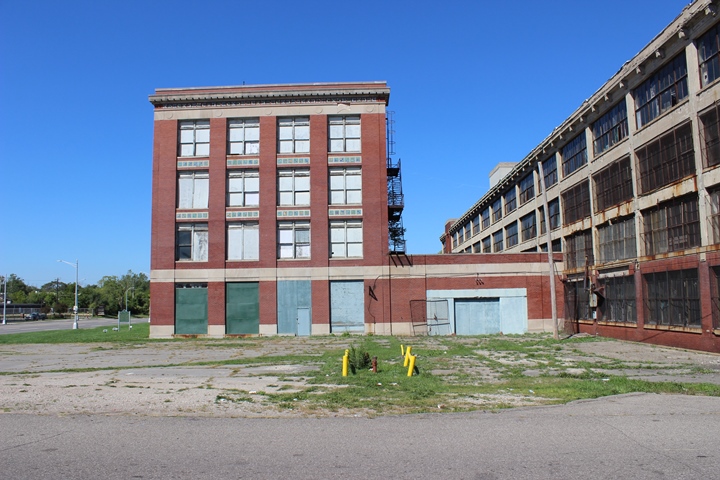
The photo above closely replicates the location of the original photo below,
which was taken to the southwest of where I took this photo. Both
photos include the administration building with the factory
behind. This photo was taken 101 years after the one shown below.
What was a bustling auto plant that put the United States in
motor vehicles in 1915, is now an unused office building and a repurposed
factory.
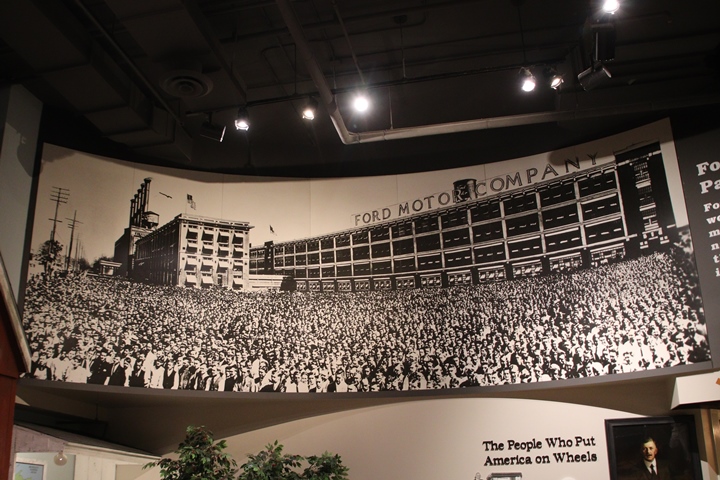
This photo is on display at the Michigan
History Center in Lansing, MI. Author's photo added 2-17-2023.
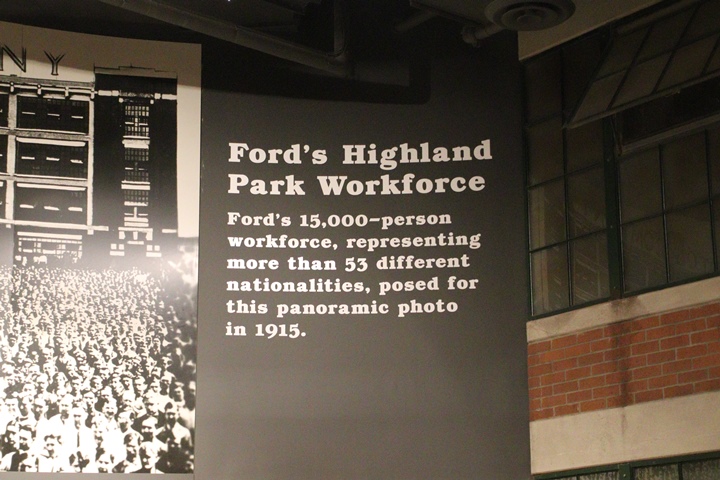
The key fact here is that the plant employed
workers from 53 different nationalities. Today, most Americans
have conveniently forgotten their roots and that their ancestors came
over in boats from many corners of the globe. It makes life easier
for them to forget this important fact that we are all "boat people."
I know that my mother's family was looked down on as "foreigners" by
many earlier arrivals to this country. We all came from somewhere.
For some of us, it was Moravia, Scotland, and Switzerland. No doubt
those three were included in the 53 nationalities at the Highland plant
in 1915. Author's photo added 2-17-2023.
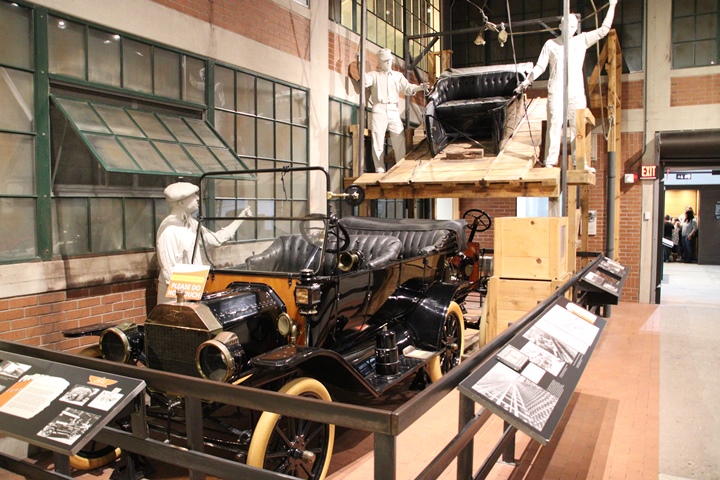
The next five images are of a diorama at the
Michigan History Center. They depict the body drop onto the
chassis of the Model T. The diorama depicts a time when the body
drop was done outside the factory walls. Author's photo added
2-17-2023.
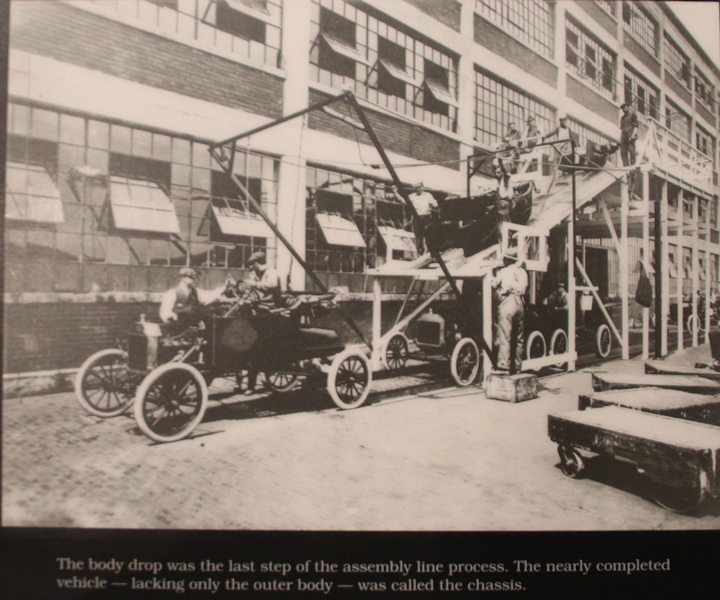
At some point, this no doubt was moved
inside. Image added 2-17-2023.
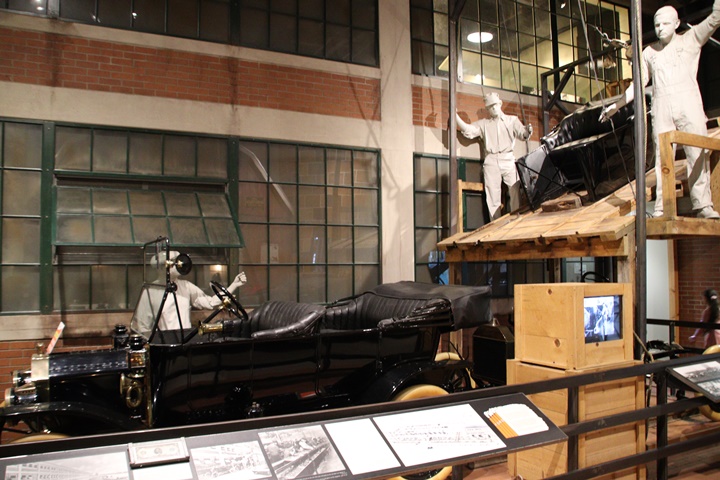
Author's photo added 2-17-2023.
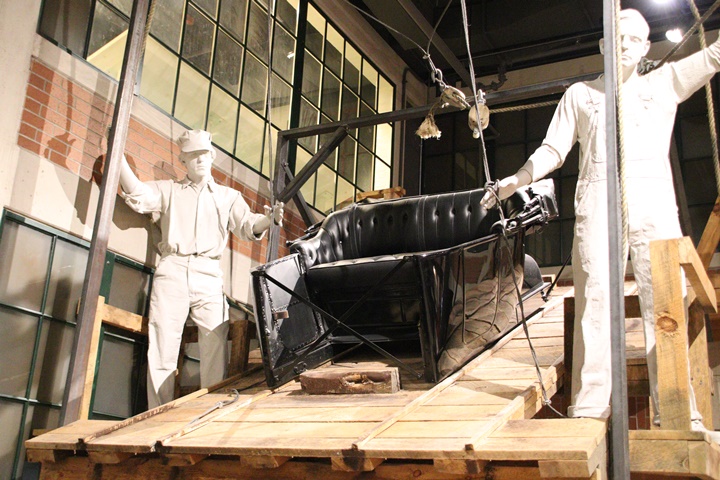
Not only was the platform the body slid down
made of wood, but so was the body of the Model T itself. Author's
photo added 2-17-2023.
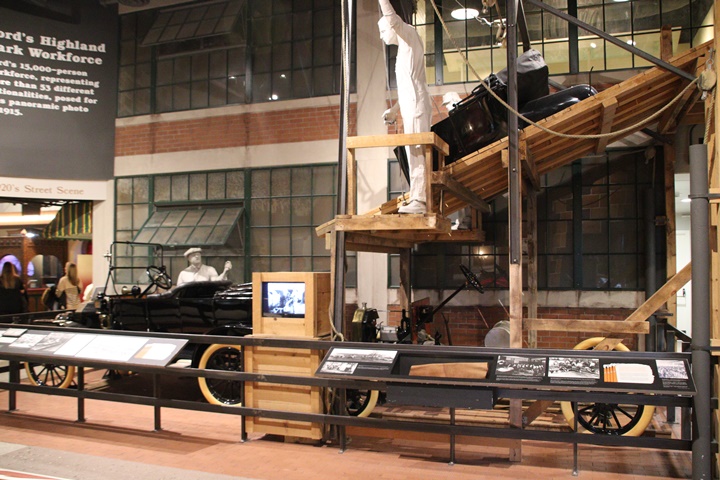
Author's photo added 2-17-2023.
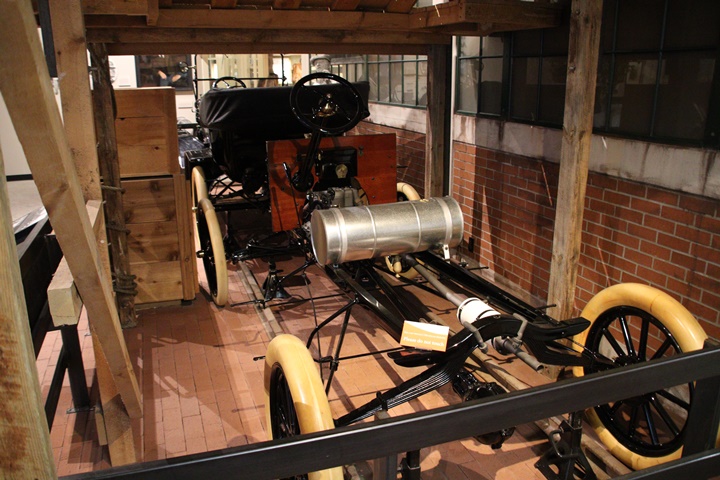
Author's photo added 2-17-2023.
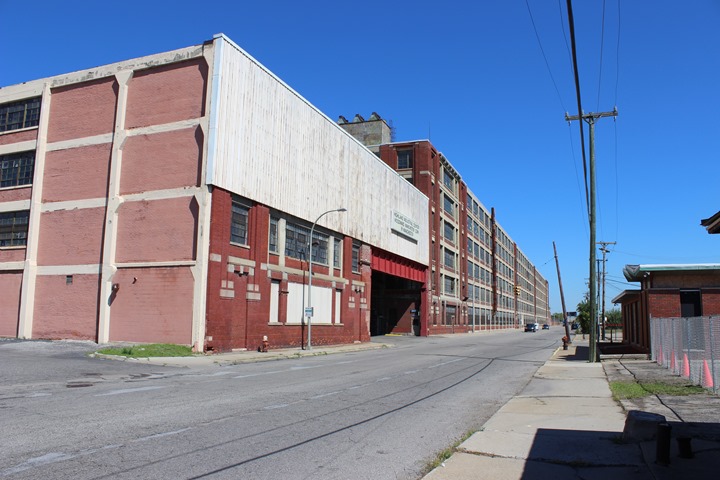
Looking east of the former complex along
Manchester Street. This portion is two city blocks long.
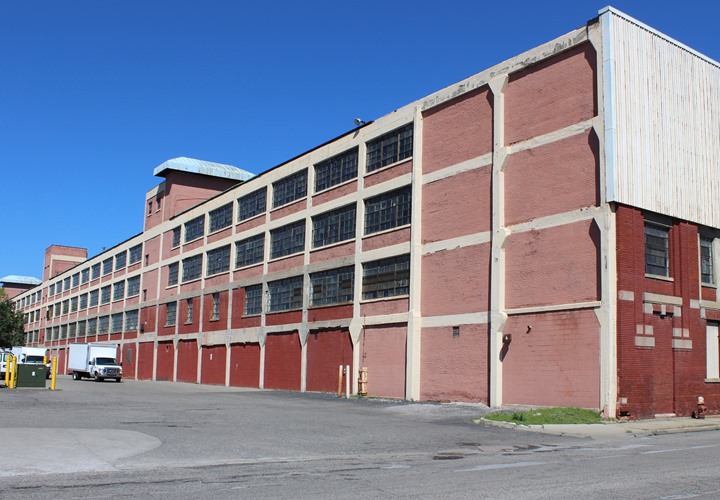
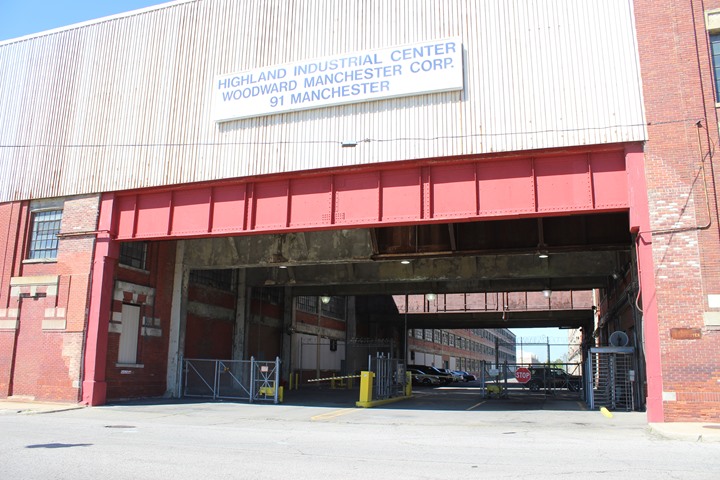
About 20% of the original structure still
stands. A small part of it is still being used.
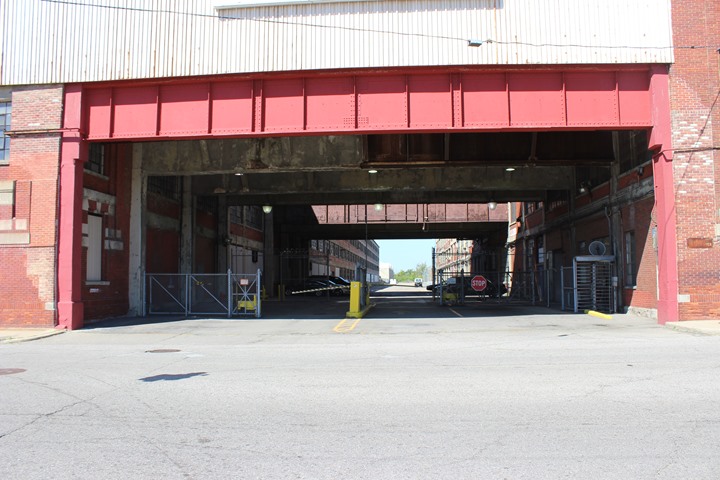
The plant complex extended to the
trees in the distance.
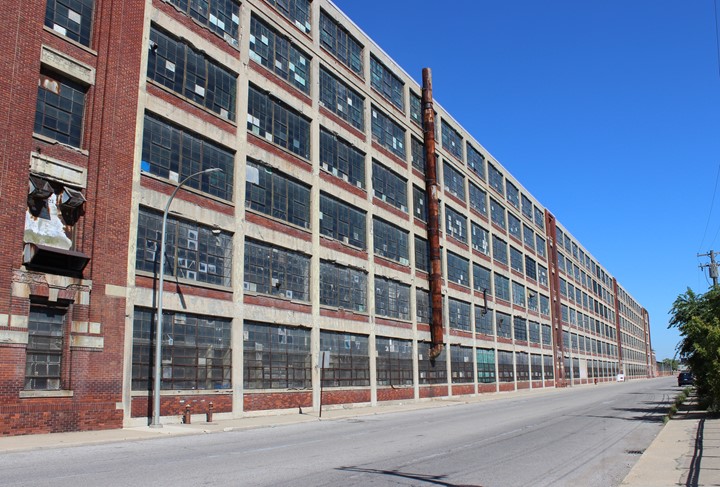
Not only did the plant complex cover 60
acres, but this building is six stories tall and 865 feet long. It
is 75 feet wide and known as the Crystal Palace to the workers.
Architect Albert Kahn insisted on natural light for the workers.
There is more than 50,000 square feet of glass in the building.
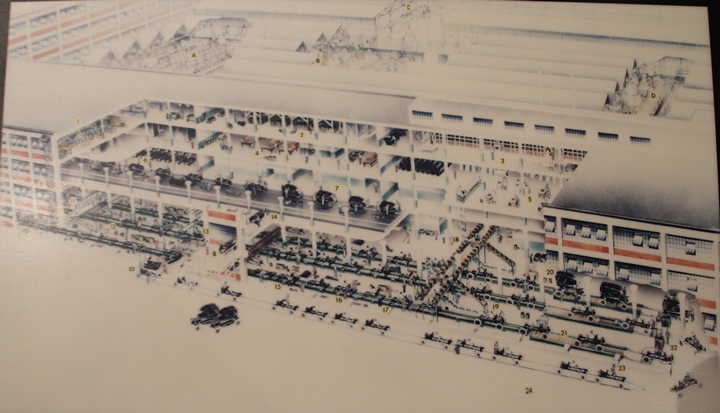
This cutaway drawing of the plant shows that
the plant was wide enough to run the chassis assembly line back and
forth three times on the first floor. The body assembly was on the
third floor. At the right end of the image, the completed chassis came
outside the factory where they mated with the bodies depicted in the
diorama above. Image added 2-17-2023.
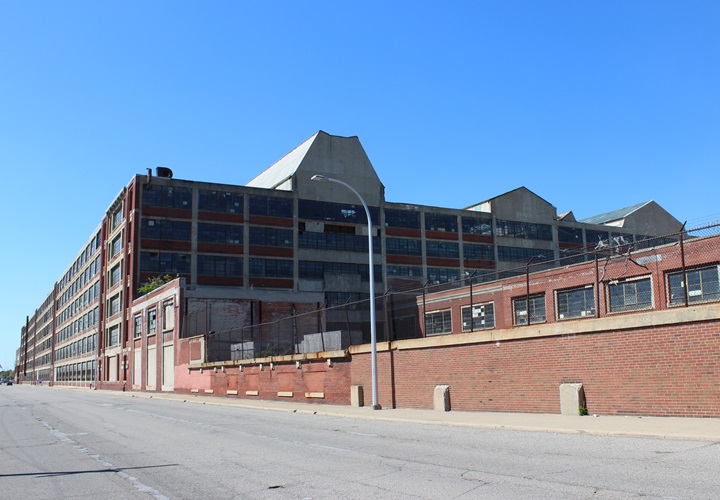
This image is looking west from the east end
of the complex. There is another six story building that runs
north at the end of the complex.
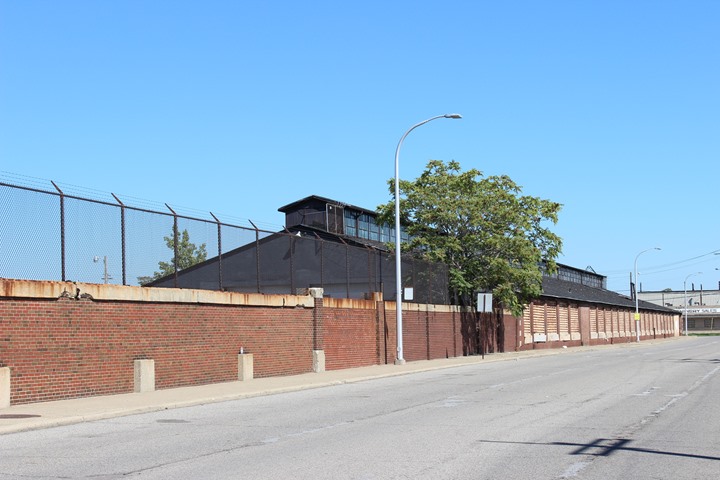
This view is from the southeast corner of the Highland Park
complex looking north.
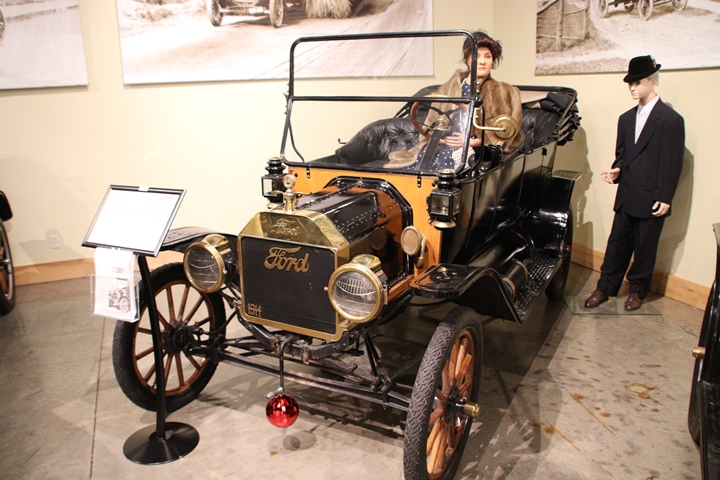
This is one of 165,382 1914 Model T touring
cars produced in Highland Park's first year of production. This is
one of over 40 Model Ts on display at the Model T Museum in Richmond,
IN. This museum is a "gold nugget" find of a museum that is located
just north of downtown Richmond. Author's photo added 2-17-2023.
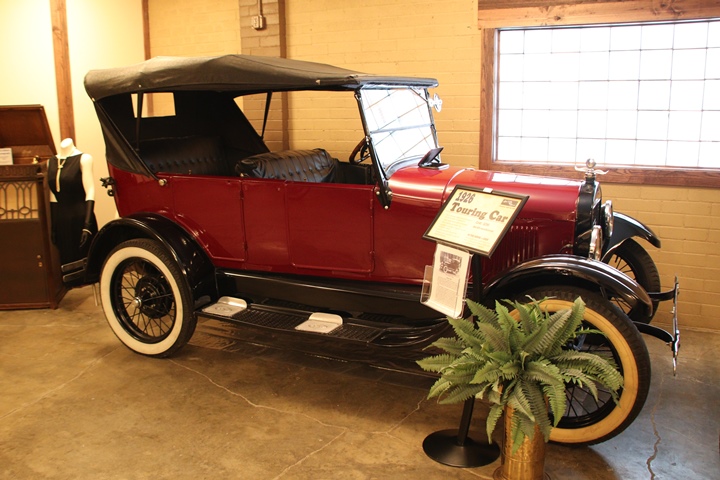
The Model T Museum also has a 1926 touring
car on display. The Model T touring car was one of only two models
to be made during the production of the vehicle. The last Model T
was produced in May 1927. Author's photo added 2-17-2023.
Before Highland Park:
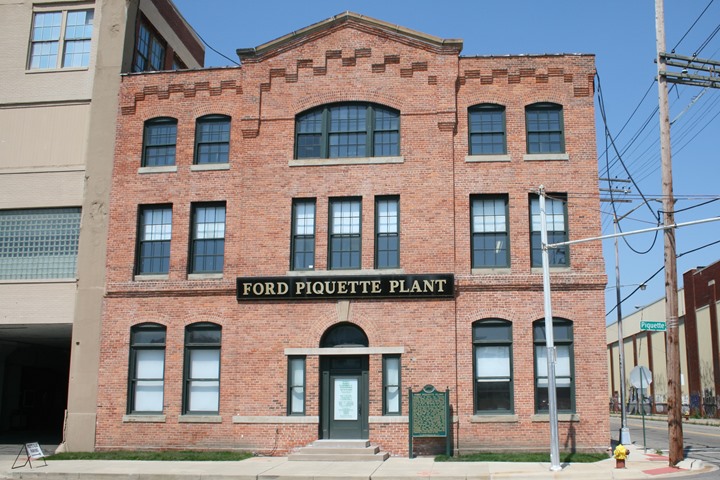
In 1904 Henry Ford began assembling
automobiles in this plant at the corner of Piquette and Beaubein Streets
in Detroit. The first Model Ts were built here.
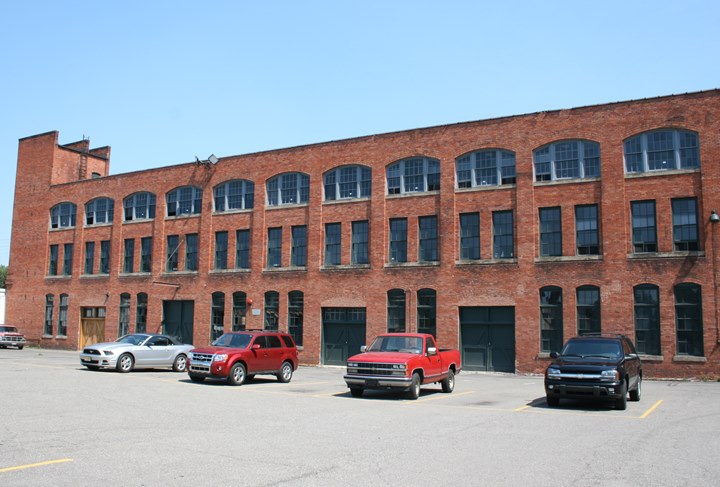
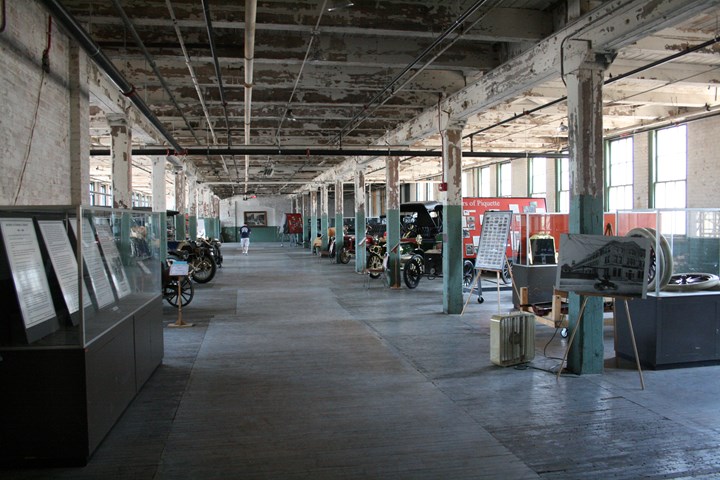
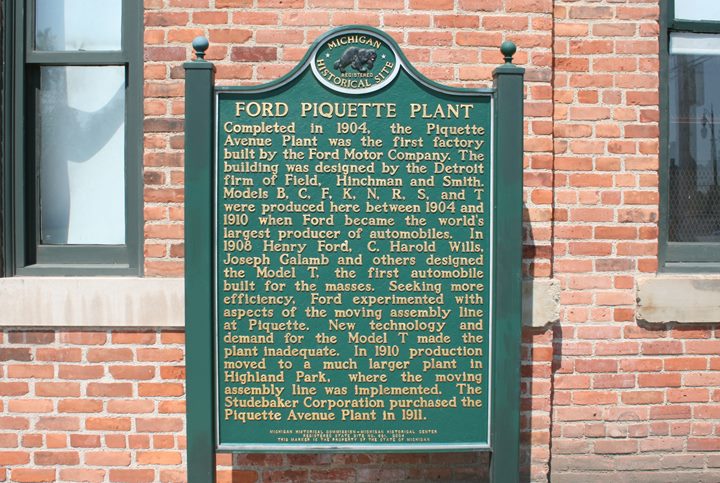
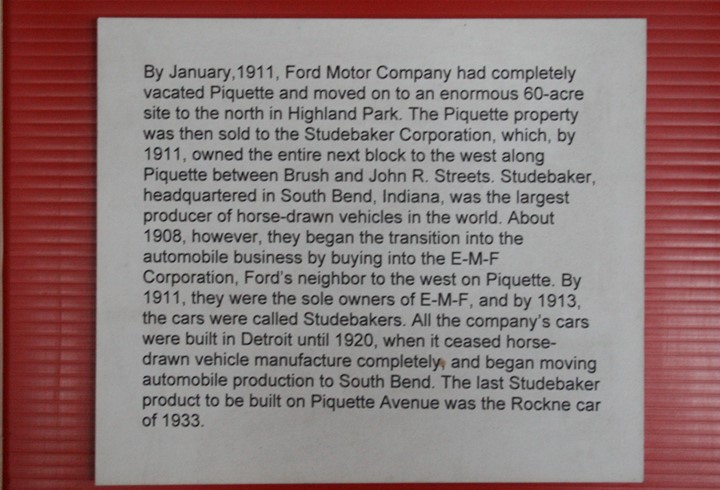
I visited the very fine Studebaker
Museum in South Bend, IN several times. To my knowledge, there is
no mention of Studebaker's operations in Detroit, even though
Studebakers were produced in Ford's former Piquette plant for twenty
years. The Studebaker
Museum is very South Bend centric.
Ford Highland Park Plant World War Two Products
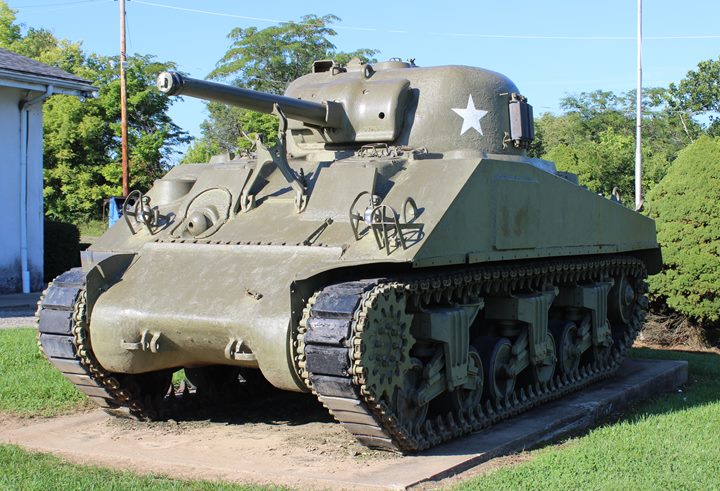
This is one of 1,690 M4A3(75) Sherman tanks built at
Highland Park. It is located at
the American Legion Post 201 in West
Jefferson, OH. It was built in August 1943 and is
serial number 12638.
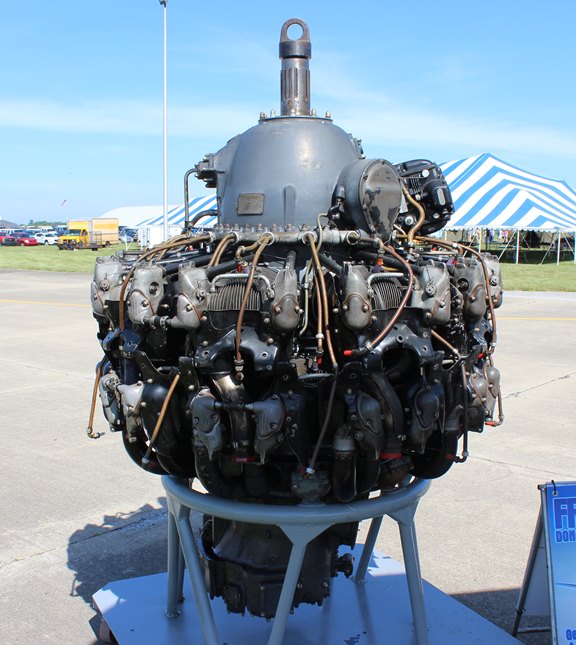
Ford built 57,851 Pratt & Whitney R-2800
radial aircraft engines during World War Two at its River Rouge aircraft
engine plant. Highland Park produced many of the components for the
engines built at River Rouge.
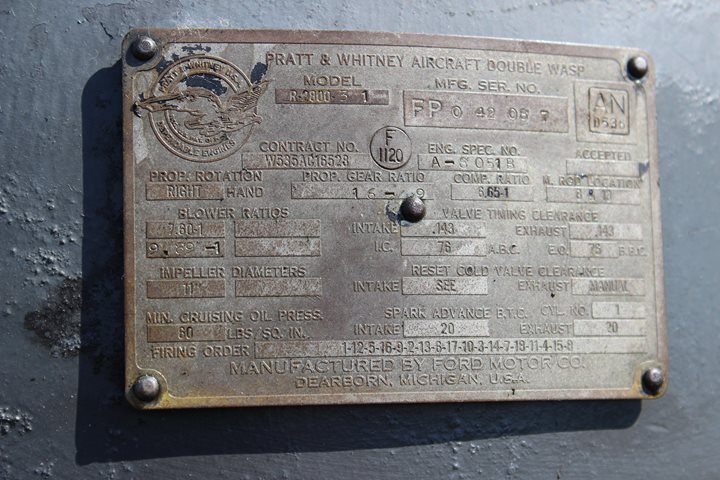
This particular engine was built for the
Lockheed PV-2 Harpoon. Ford River Rouge also built the R-2800 for
the Curtiss C-46, Douglas A-26,
Martin B-26, Northrop P-61, Republic P-47, and the Lockheed B-34.
Ford Highland Park supplied components for all of these engines.
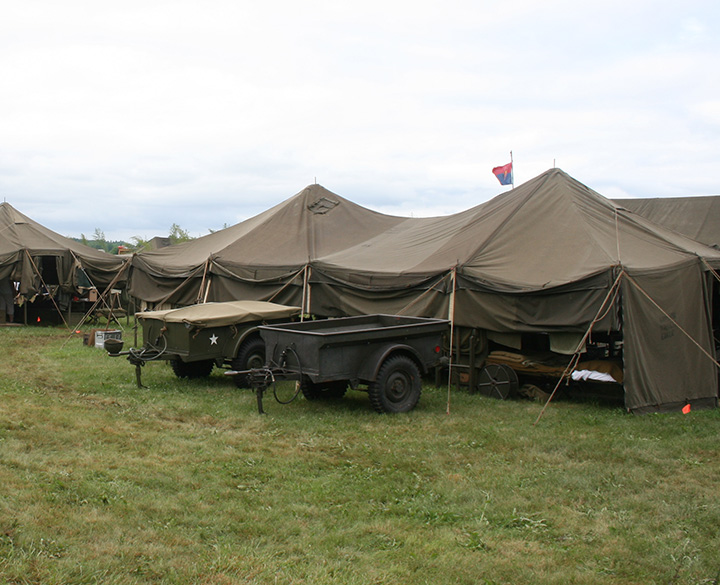
Ford Highland Park produced 9,498 tents for
the US Army.
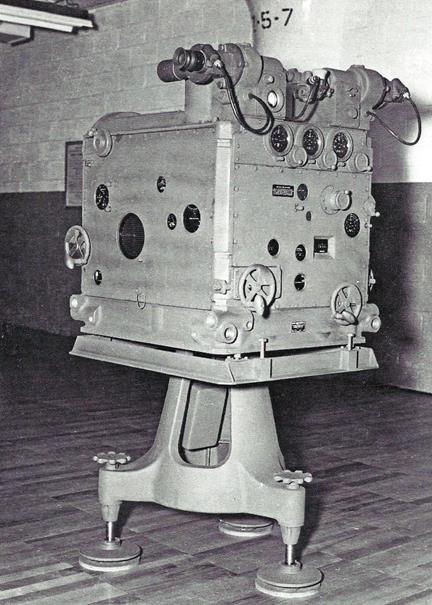
This M7 gun director was designed by the
Sperry Gyroscope Company for the US Army to track fast, low flying
aircraft, and aiming anti-aircraft weapons. The next photo shows
that it was a complicated mechanical analog computer. The US Army
was looking for a company to mass produce this gun director. It
turned to Ford due to its experience in mass production. Making
something this complex using mass production techniques had not been
previously done. Ford Highland Park was up to the task of making
1,202 of them.
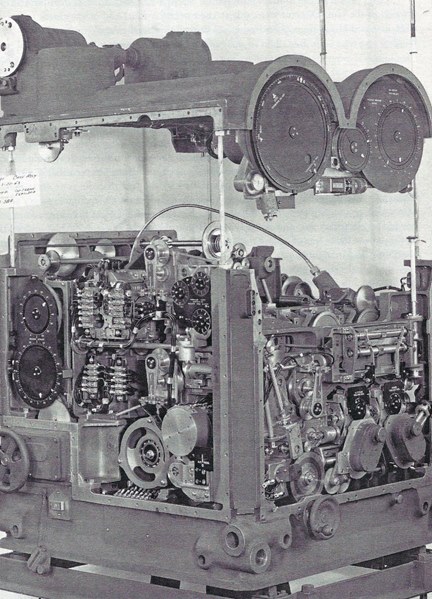
The M7 gun director was a mechanical
computer which included 276 aluminum die castings. Also, this
complex device contained 721 gears on 380 shafts, made of a special
nickel alloy. To add to the difficulty of building this device, it
had 549 ball bearings designed to make all the shafts and gears move
smoothly.
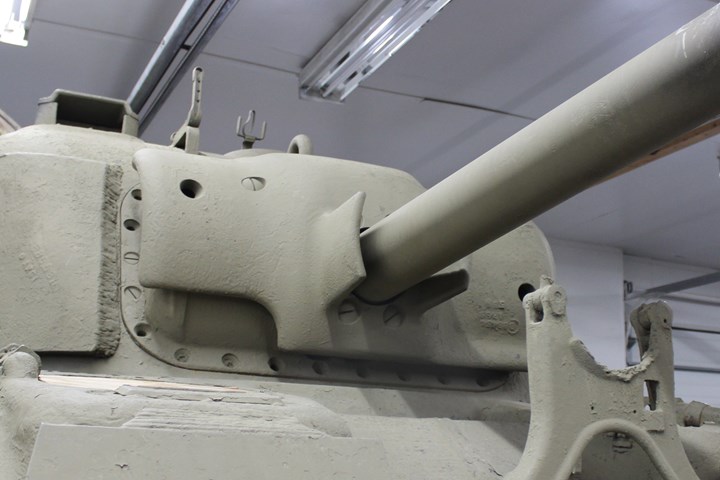
Ford assembled 19,985 M34/M34A1 gun mounts at the Highland Park plant
from parts made at the River Rouge. Six manufacturers of the
Sherman tank then assembled them into the tanks. Author's photo
added 2-1-2018.
|
































